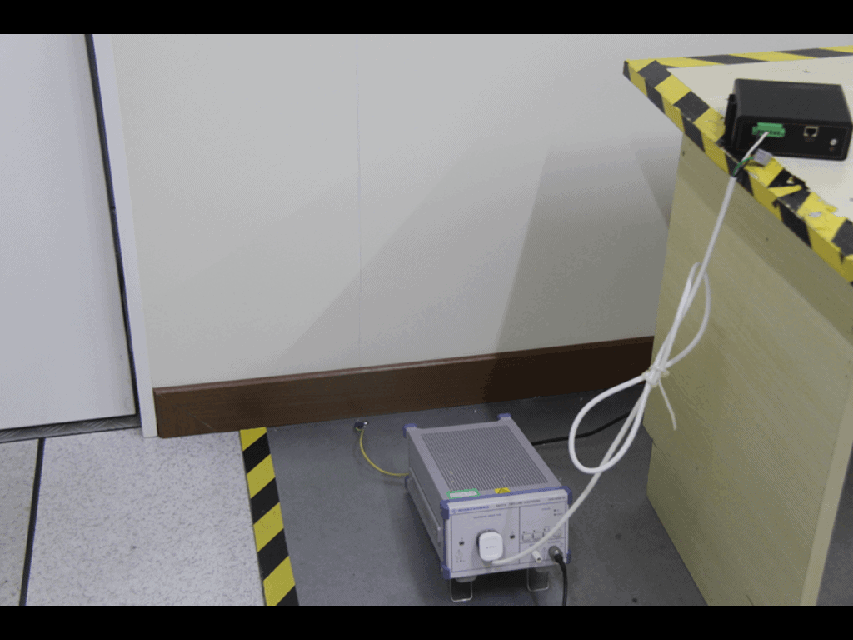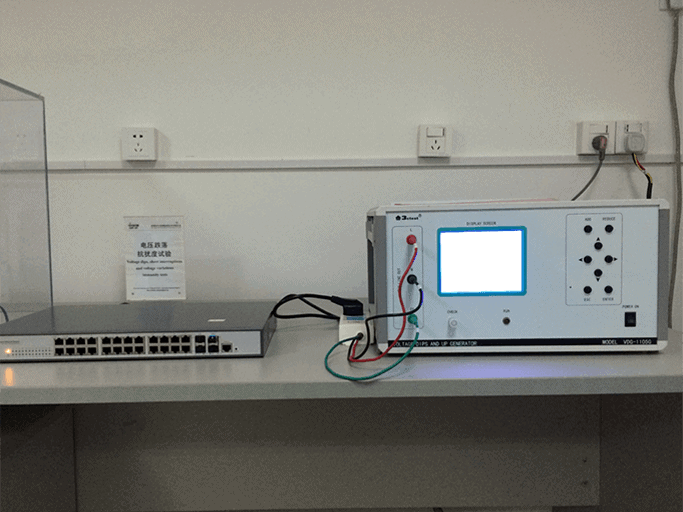Introduction
POE switch refers to a device that can transmit data for some IP-based terminal devices (such as wireless APs, webcams, etc.) while also achieving power supply function without changing the existing architecture of Ethernet cabling infrastructure. It can also be understood as a switch that supports Power over Ethernet. PoE switches combine network communication and device power supply functions, and the communication function is one of the core functions of PoE switches. PoE switches are currently mainly used in video transmission, wireless coverage, and other fields. To understand and understand the transmission characteristics of the PoE switch, you can apply it in various projects and let your data traffic flow smoothly. So today, Mr. Hua talked to you about choosing the bandwidth of the PoE switch on communication issues.
Throughput, bandwidth, and packet forwarding rate of PoE switch relationship
1. Throughput: Throughput is the data amount (measured in bits, bytes, etc.) that can be successfully transmitted per unit of time to a network, device, port, or other facilities. That is, throughput is the maximum rate of data that a machine can receive and forward without frame loss. The size of the throughput is mainly determined by the internal and external network port hardware of the network device and the efficiency of the programming algorithms, especially the programming algorithms. For devices that need to perform a large number of operations, the inefficiency of the algorithm can make the communication volume significantly reduced.
2. Bandwidth: Throughput and bandwidth a terms that are easily confused. When discussing the bandwidth of a communication link, It usually refers to the number of bits that are transmitted over the link per second, depending on the link clock rate and channel coding, also known as wire speed in computer networks. That is, the bandwidth of 100 Gigabit Ethernet can be said to be 100 Mbps. However, a distinction needs to be made between the available bandwidth on the link and the actual number of bits per second (throughput) transmitted on the link. It is often preferred to use the term “throughput” to indicate the performance of a network. Because the reality is influenced by various inefficiencies (e.g., communication dual-transmission NIC devices, link-state, etc.), nodes a pair connected by a link with 100Mbps bandwidth may only achieve a throughput of 50 Mbps. This means that an application on one host can only send data to another host at 50 Mbps. Bandwidth emphasizes the maximum speed that can be reached, while throughput emphasizes the speed in real-world situations.
3. Packet Forwarding Rate: For network devices, in addition to throughput, which is an important metric, another primary metric is the message forwarding rate, which is often referred to as the packet forwarding rate. Packet forwarding rate generally refers to the full-duplex throughput of 64-byte packets, including throughput and packet forwarding rate metrics. The packet forwarding rate measure for wire-speed ports is calculated using the shortest Ethernet 64byte packet (Layer 2 or Layer 3 packet) in IEEE 802.3 as the base, with the following formula.
Packet Forwarding Rate (pps) = Throughput / ( 84byte × 8bit )
100 Gigabit Ethernet, packet forwarding rate of a wire-speed port = 100,000,000bps / 672bit = 0.148Mpps
Gigabit Ethernet, packet forwarding rate of a wire-speed port = 1,000,000,000bps / 672bit = 1.488Mpps
10 Gigabit Ethernet, packet forwarding rate for a wire-speed port = 10,000,000,000bps / 672bit = 14.88Mpps

Analysis of PoE switch transmission technology in video transmission applications
Based on HoweVision’s years of field application experience, the actual bandwidth utilization of PoE switches is only 60-70%. In video transmission, it is recommended that you choose PoE switches with greater bandwidth. In addition, when looking at the backplane bandwidth, you should also pay attention to its packet forwarding rate. Only when the backplane bandwidth and packet forwarding rate meet the PoE switch requirements can the video transmission be smoother. Also, the switch with relatively large backplane bandwidth and relatively small throughput, in addition to retaining the ability to upgrade and expand its software efficiency / unique chip circuit design, has problems. The switch with a relatively small backplane and rather a large throughput has a relatively high overall performance.
The backplane bandwidth of a PoE switch is the maximum amount of data that can be throughput between the switch interface processor or interface card and the data bus. The PoE switch can power the AP without deliberately requiring the backplane bandwidth. Still, if it powers a network camera, the backplane bandwidth is significant because video surveillance has a code stream problem.
The code stream of the PoE switch refers to the data traffic used in the video file per unit of time, and the code stream of the video itself has the possibility of being very large at a specific moment. If the backplane bandwidth of the PoE switch is too tiny, video transmission will be delayed or jammed, which is fatal for network monitoring. It shows that it is imperative to choose the proper backplane bandwidth PoE switch for surveillance projects.
We need to repeatedly clear backplane broadband and the relationship between the code stream in the actual application. in our years of experience in the security industry, transmission data accumulated,
Mr. Hua believes that
100W (720P) pixel camera code stream is 4.5M,
130W (960P) pixel camera code stream is 6M,
200W (1080P) pixel camera code stream is 8M,
300W pixel camera code stream is 10M,
500W pixel camera code stream is 13-15M.
For example, 200W (1080P ) pixels, the code stream of 8M cameras generally 8 PoE ports PoE switch.

PoE switch bandwidth selection law (HoweVision experience)
1, 4-8 channel network camera networking, pixel below 500W, you can choose pure 100 megabit PoE switch.
2, 4-8 channel network camera networking, pixels equal to or higher than 500W, the minimum need to choose the lower port 100 megabits, the upper port gigabit PoE switch.
3, 4-8 channel network camera networking, ultra-high-definition 4K, or even 8K video, you must choose a pure Gigabit PoE switch.
4, 16-24 channel network camera networking, more minor than 500W pixels, you can choose the lower port 100 megabits, the upper port gigabit PoE switch.
5, 16-24 channel network camera networking, pixels equal to or higher than 500W, must choose pure Gigabit PoE switch.
6, 16-24 channel network camera networking, ultra-high-definition 4K, or even 8K video, you need to choose the lower port Gigabit, upper port 10 Gigabit PoE switch.
7, PoE switch in wireless transmission applications. To choose the PoE switch based on the AP’s lower link port bandwidth, the upper link port based on the site may carry the mobile terminal budget to choose 100 gigabits, ten megabits. (When you do not have data to support the uplink port bandwidth selection, please select gigabit uplink).
8, The application of PoE switches in other fields is mainly applying terminal equipment such as access control, alarm, lighting, etc. The data flow of this type of application is relatively small, and the 100M series PoE switch products are used; This type of application data traffic is small and more often uses 100-gigabit series PoE switch products.
9, 48-way series PoE switch networking, regardless of the scenario used, you must choose the upper link port gigabit bandwidth. When the lower-link port application is gigabit, the uplink port must have a 10 Gigabit bandwidth PoE switch.
Mr. Hua says communication, I am Mr. Hua, 100% technical, 100% original, talking about PoE technology and stories, and jointly promoting communication technology to a broader future! Today’s “How to choose the bandwidth of PoE switch” is shared here. What kind of views do you have on PoE switch bandwidth selection? You are welcome to leave a message to Mr. Hua. Thank you for checking, for more PoE stories, and so on. See you again next time!



